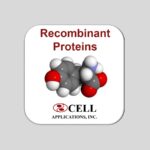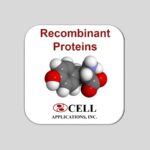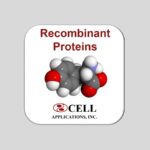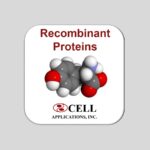Anti-CCR6: Rabbit CCR6 Antibody
Rabbit CCR6 Antibody: Rabbit CCR6 Antibody
Size: 100 ul
Price: $375.00
Description
CCR6 belongs to family A of G protein-coupled receptor superfamily. Cellular distribution of CCR6 is limited to leukocytes, with expression in mature lymphocytes, especially memory cells and immature dendritic cells (DCs) of particular lineages. In most cases it is absent from granulocytes (except activated neutrophils), monocytic cells, immature lymphocytes, and mature DC. Moreover, CCR6 is a selective marker for the identification of Th17 cells during an immune response. Furthermore, CCR6+ Th17 cells were present even in naïve mice and this population showed signs of activation in the steady state. During the acute phase of the immune response, the proportion of IL-17 producing Th cells in the lymph nodes decreased compared to the Th1 cell subpopulation.2 CCR6 has been reported to be of particular importance at mucosal sites. Compared with WT mice, Ccr6–/– mice have smaller Peyer patches, fewer associated M cells, and defective formation of isolated lymphoid follicles. Abnormalities in intestinal immune responses have been reported for Ccr6–/– mice in models of inflammatory bowel disease and during infection with rotavirus and Salmonella typhimurium. In the skin, Ccr6–/– mice have been reported to develop more or less severe contact hypersensitivity as well as diminished delayed-type hypersensitivity and graft-versus-host–mediated injury.3
2. Pötzl, J. et al: PLoS ONE 3:e2951, 2008
3. Hedrick, M.N. et al: J. Clin. Invest. 119:2317-29, 2009
Details
| Cat.No.: | CA1201 |
| Antigen: | Short peptide from human CCR6 sequence. |
| Isotype: | Rabbit IgG |
| Species & predicted species cross- reactivity ( ): | Human, Rat |
| Applications & Suggested starting dilutions:* | WB 1:1000 IP n/d IHC 1:50 – 1:200 ICC n/d FACS n/d |
| Predicted Molecular Weight of protein: | 46 kDa |
| Specificity/Sensitivity: | Detects endogenous levels of CCR6 proteins without cross-reactivity with other related proteins. |
| Storage: | Store at -20°C, 4°C for frequent use. Avoid repeated freeze-thaw cycles. |
*Optimal working dilutions must be determined by end user.




